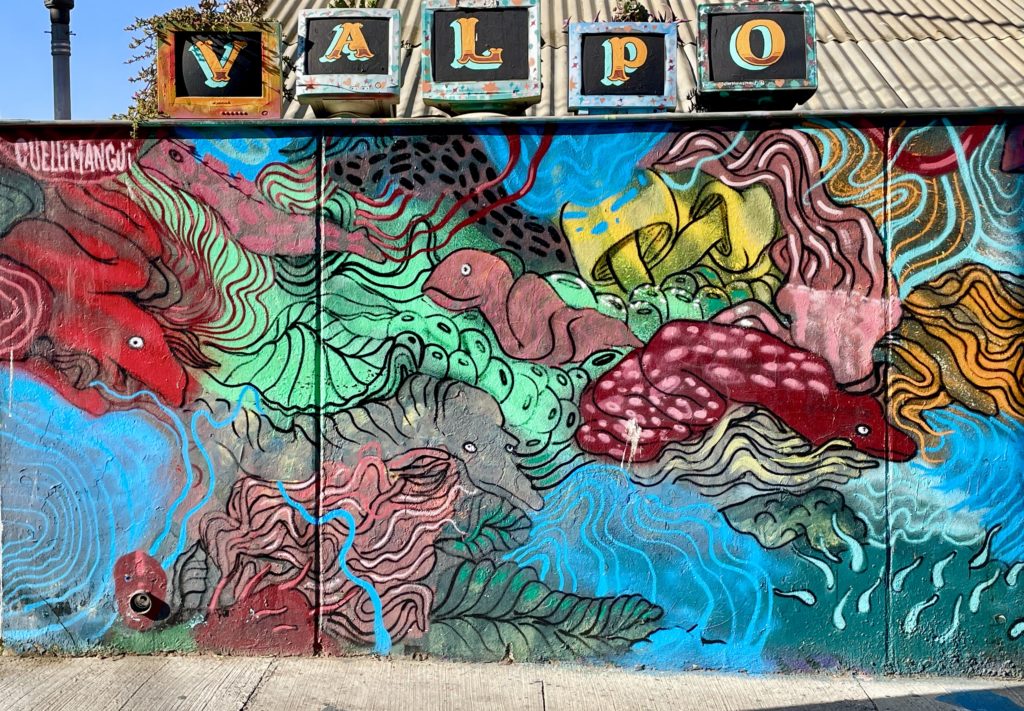
For months along my journey, I’ve been hearing about Valparaíso, Chile. Known historically as the “Jewel of the Pacific”, or just “Valpo”, its winding colorful streets and laid-back beach vibe draws crowds of bohemian backpackers and weekenders from Santiago. So, of course, I had to go to Valpo, too!
Since I knew I was going to really like it, I found a volunteer job at a bed and breakfast, settled in and stayed for a month.

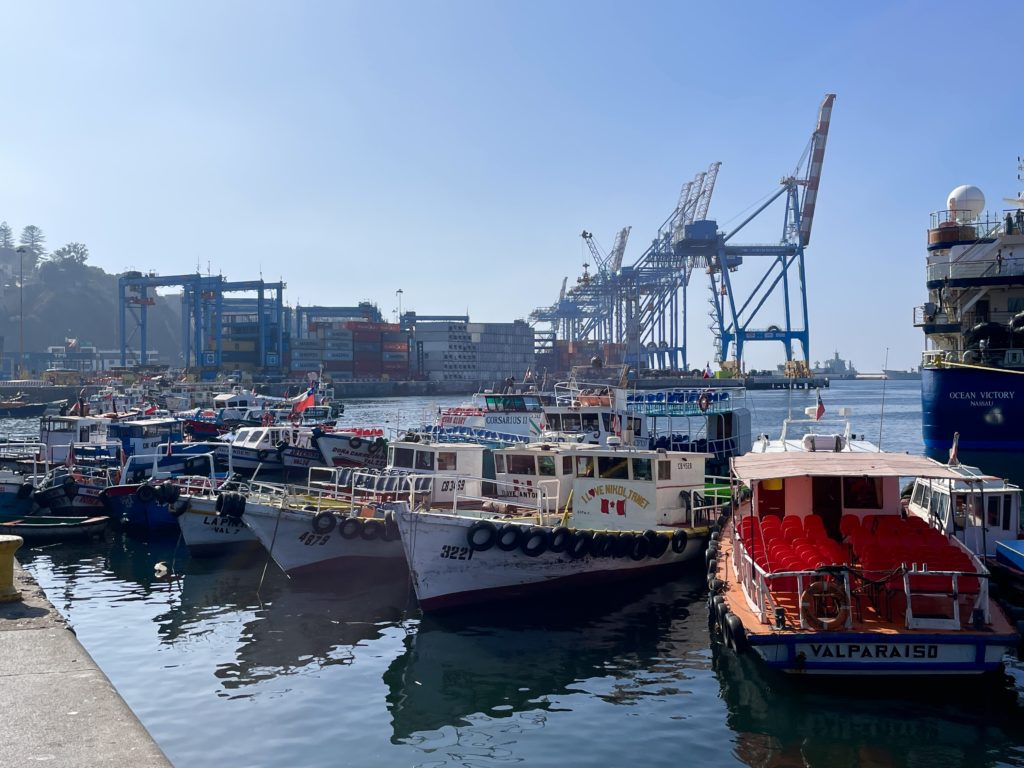

Setting just a couple of hours outside the capitol of Santiago, Valparaíso has a long history of reinventing itself. Starting in the early 1800’s, it developed its shipping piers and became an important port for the Chilean Navy. By the mid-1800’s, during California’s Gold Rush, Valparaíso was an important supply stop for ships sailing around the southern tip of South America and up the Pacific coast. The sailers supposedly dubbed the city “Little San Francisco” because of Valpo’s 45 different hills surrounding a picturesque bay.


The city grew immensely during this time, and the wood and metal pieces from derelict ships and shipping barrels were commonly used to construct new houses. Boat paint of various colors was also used to protect the new construction from the salty air, and so a colorful cityscape was born. Meanwhile, floods of immigrants arrived from Britain, Germany, France, Switzerland and Italy. Their heritage wove into the fabric of the city and can still be recognized today in the architecture, street names, non-catholic churches, book stores offering choices in a variety of languages as well as the food specialties of this region.
During this “Golden Age”, Valparaíso was really hopping. All of that came to a halt when the Panama Canal was built in the early 1900’s and this city was no longer located on a main shipping route. Although container ships full of fruit and cruise ships full of passengers still use Valparaíso’s port, another larger port a little to the south in San Antonio has taken on much more of the Chile’s recent international traffic.

So, what happened to Valpo? They reinvented again. Throughout the 1900’s, artists took a liking to this colorful city. However, during the 1970’s and 80’s, the dictatorship declared any form of art and self-expression illegal throughout Chile. Many prominent artists from Valparaíso were exiled to other countries. But the artists who stayed formed clandestine groups, or brigades, painting graffiti and murals in the narrow passageways to speak out against the political oppression.
” El Derecho de vivir en paz” is, “The right to live in peace”






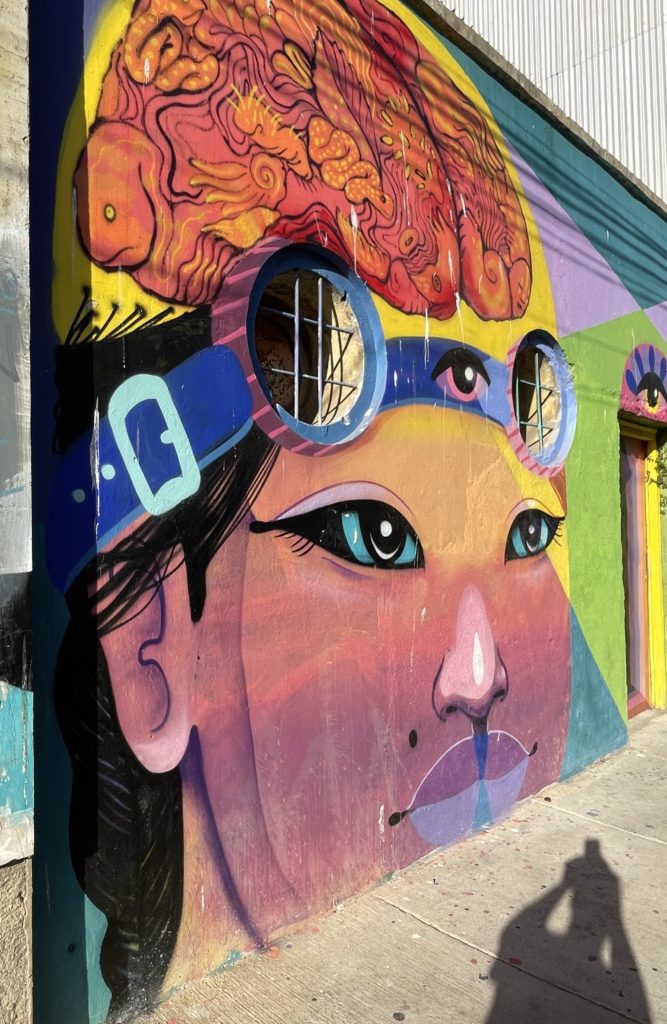
Murals that are politically, socially and culturally motivated are still commonly found in the streets of Valparaíso. I especially liked this nod to the green bandana-wearing Chilean women who recently fought for, and won, the legal right to make their own family planning decisions.

When democracy finally returned to Chile, arts and culture experienced a profound renaissance – especially in Valpo. By the 2000’s, street art was again being promoted- so much so, in fact, that and the city held a festival in the early 2000’s to attract more muralists from around the world. Many of these well-known muralists and street artists have stayed in the community and are still being commissioned to decorate the walls and garage doors of houses, businesses and, frankly, any spare space they can find.
To celebrate this heritage and continue to attract new artists, Valpo hosts over 50 arts and cultural events each year. UNESCO named the historic quarter of Valparaíso a World Heritage Site in 2003 based on its “outstanding historic and cultural identity”.


Thousands of examples of commissioned street art and rogue graffiti line the streets, plazas, stairways and alleyways of this hilly city. I spent hours wandering the streets and photographing different scenes that caught my eye. One day I took a picture of a bicycle in front of a mural and wandered on. About 20 minutes later I found myself standing in front of the same bicycle. I started to laugh. A local artist looked up from her table of wares and asked what was so funny. I explained to her that I was obviously lost. She laughed too, and replied that losing oneself is a very common pastime in Valpo.
I wandered on. Sometimes a passage felt secret, and then I turned the corner and a view of the entire port stretched out before me.




Other passages revealed hidden cafes, bars, ice cream shops or a pretty garden. Local artists, dancers and musical groups use all the public spaces as a stage to practice for anyone who happens to come along. In Valpo, art is everywhere!











Sometimes, the murals were so big or so stunning, they’d stop me in my tracks!








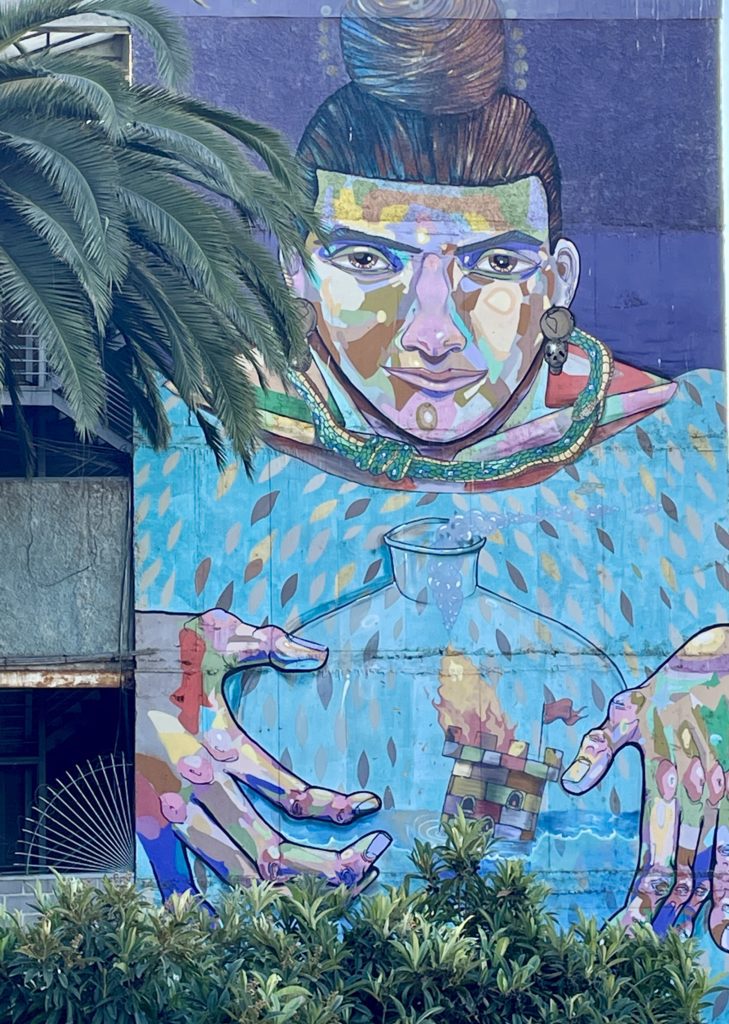
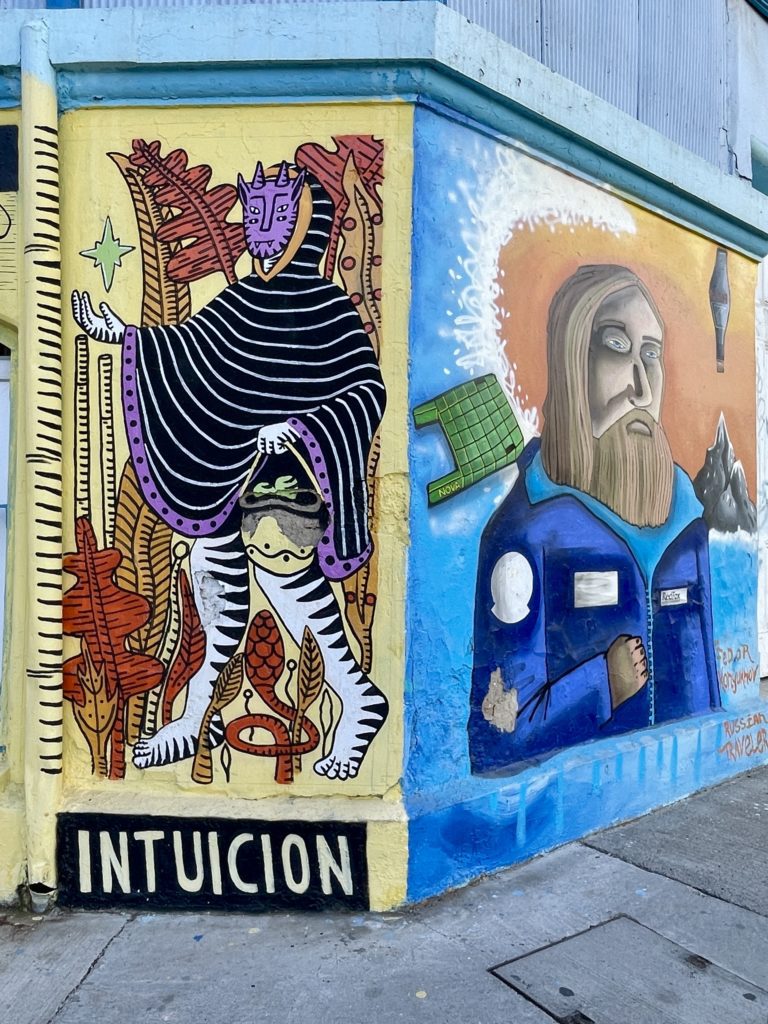

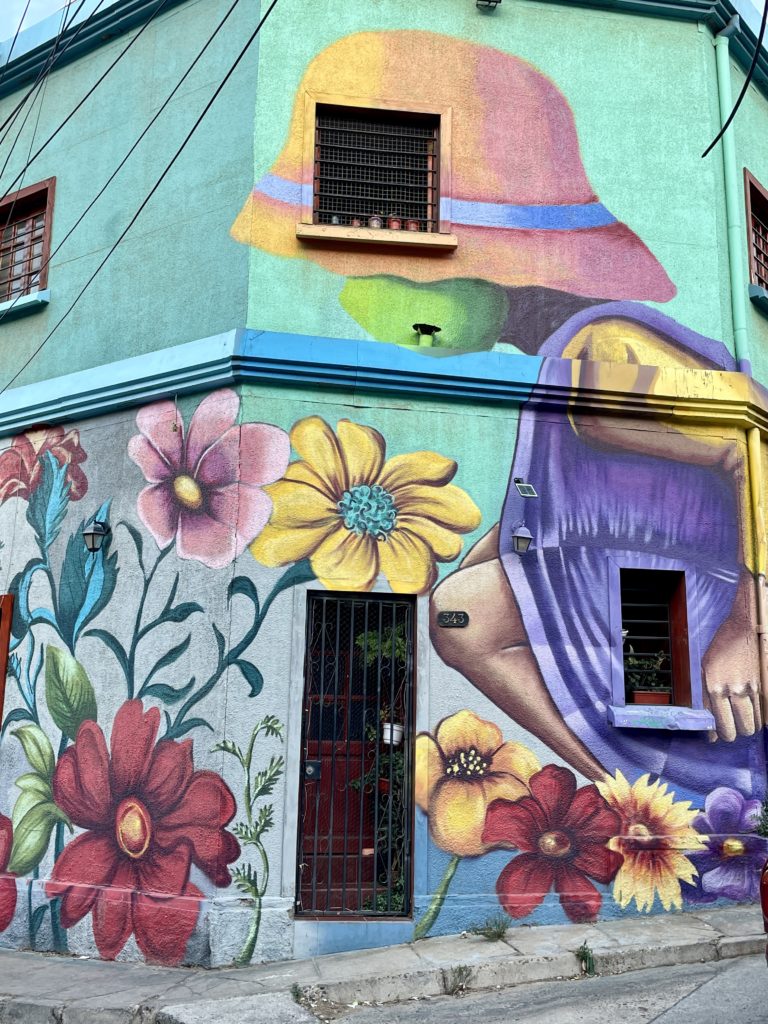




Walking around Valpo, it seems you are always going up or down. So the many stairways are a favorite palette for the artists too… with lyrics of a song, piano keys, or a mural painted across the risers.







Historically, some of the steps were built as slides to transport goods more easily between the city’s levels. Now, the slides are more for kids of all ages to enjoy… yes, that means me! Here I am sliding around one of Valpo’s famous slides with my friend Anastasia from France.

Valparaíso is also known for its historic funiculars, or tracked elevators to move people and goods up and down the hills. Originally, the British and German communities who lived on the hillsides built around 30 funiculars, however only a handful of the original ones are still in operation today. For about a dime, locals and visitors can still ride these funiculars and experience a little Valpo history.
When I wasn’t working or wandering the streets of Valpo, I hopped the local buses for day trips to the nearby coastal villages of Playa Ancha, Quintay, Isla Negra, Viña del Mar and Concón. These Chilean beaches are known for their great surf waves, rocky pools for swimming, fresh fish, ceviches and seafood empanadas. It was super fun to share some of these trips with my friends Yetzabel and Anastasia from Santiago, and Priscila, my volunteer friend at the B&B.
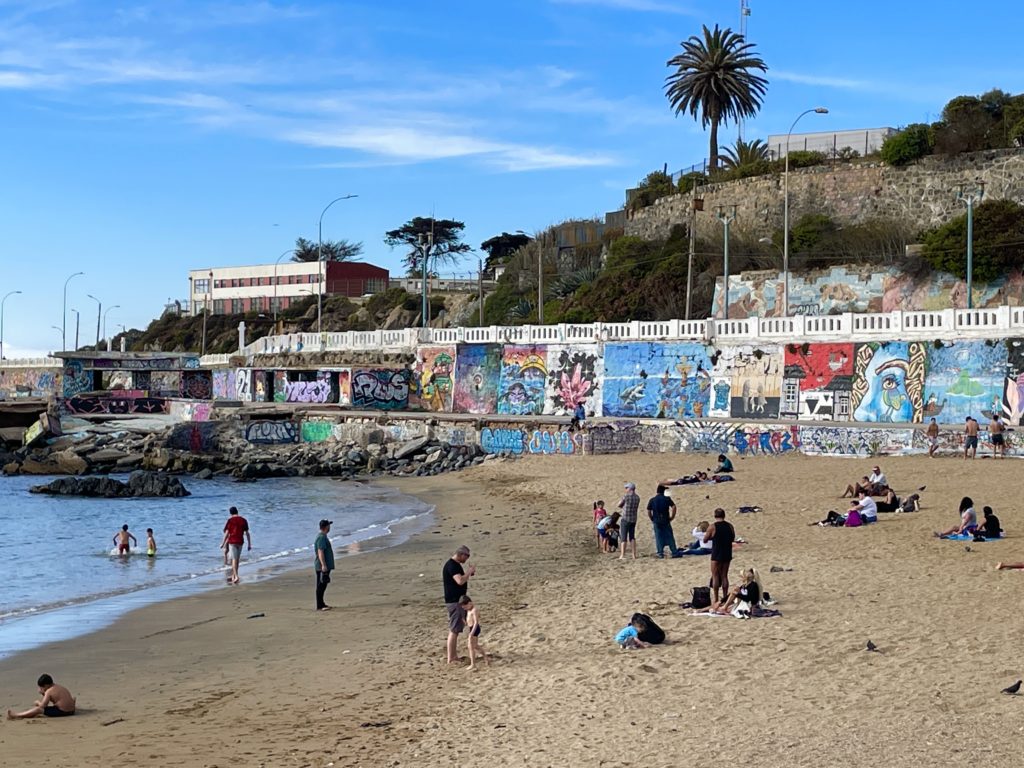










Do you remember Yetzabel? I harvested almonds from trees in her garden outside of Santiago. She invited me again to spend a day at the beach with her, her husband Patricio, and their sons, Javier and Anton. We even went swimming in the cold Pacific waters… well, I jumped in and out again! Burrrr!
I also climbed a big mountain called La Campana. At over 6,000 feet, it was quite a climb from sea level. But the view, and the fall colors in the forest, were worth it. Aconcagua, the largest mountain in the Southern Hemisphere, and the rest of the Sierra Mountains bordering Argentina, can be seen in the distance. Along the trail, a plaque commemorates that this view was also shared by “Carlos” (Charles) Darwin in his travels along this coast in 1834.





So, as I said, Valpo is really good at reinventing itself; it makes you wonder what will they come up with next? The latest answer is the Cerro Abajo! I didn’t get to see this event, but it’s too good to not show you how Valpo has turned their hills and stairways into an ultimate competition. Take a look at the first part of this video below!

For many reasons, I really enjoyed my time in Valparaíso. The city was fun to wander. The nearby coastal villages were also lovely to visit. And during the month I stayed here, I volunteered at Pontoval Bed & Breakfast. I found this position on workaway.info and it truly was one of my favorite volunteer experiences. I lived with Ernesto, the owner (who’s wife is currently living in Switzerland), and other volunteers Priscila from Brazil and Hanno from Germany. Together we prepared and served breakfast, washed and hung the sheets, and cleaned around the house. We also had the chance to cook specialty breads and desserts for the guests, and a special lunch to share among ourselves. It was so nice to live in the luxury of a lovely historic home again (with my own bedroom!), enjoy the gardens, and be able to cook and bake as much as I desired. I really appreciate Ernesto for his generosity and hospitality and will miss all of our conversations about Chile.






Scenes around the lovely Pontoval Bed & Breakfast, Valparaíso, Chile
Priscila and I were a good team for washing windows, polishing floors and making beds. But I also got to arrange cut flowers from the garden, bake cookies, and enjoy my birthday and Easter here, too!







For Easter, Ernesto taught us how to paint eggs in a traditional way using plant prints.





We pasted plant leaves onto eggs, wrapped them in cotton cloth and boiled them with the skins of yellow onions. The results were beautiful; a lovely addition to the breakfast buffet on Easter Sunday.
My stop in Valparaíso ended up being a great month in the sun. It gave me the opportunity to unpack, relax, visit the physical therapist to further the healing of my hip and make my plans for what’s next. Originally, this is as far as I had planned my travels, but northern Chile and Argentina are calling my name. So, for a couple more months, onward I go. I hope you continue to join me!

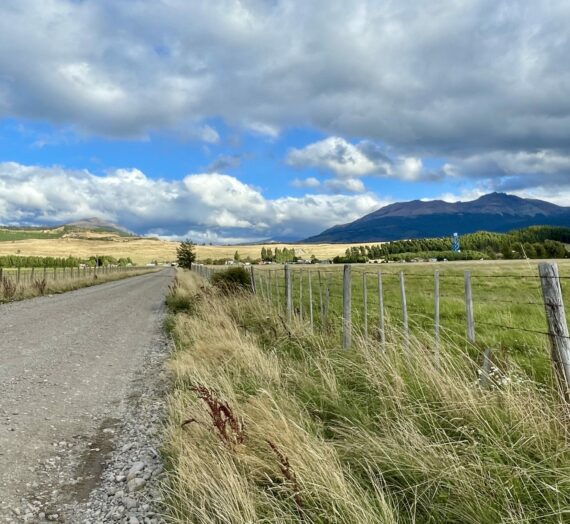
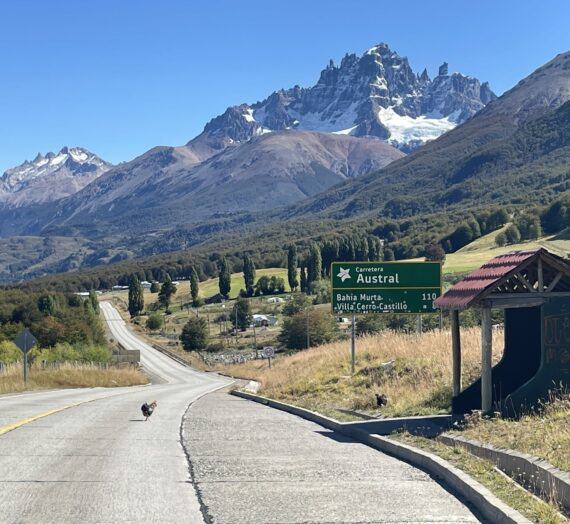
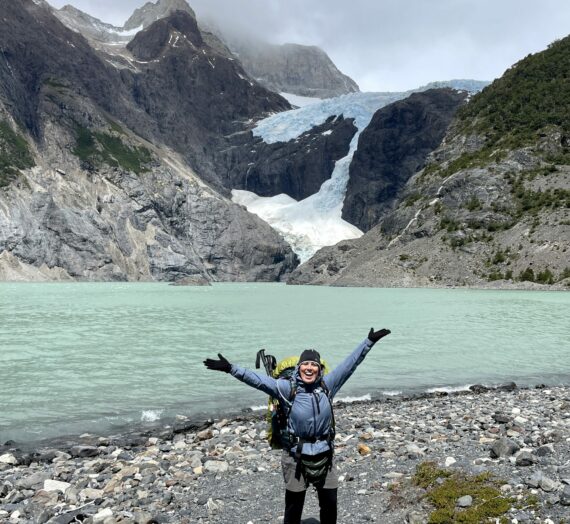
Liz
Wow! Just beautiful! What a lovely city. Thanks for sharing!
Stephanie
Belated Happy Birthday, Becky. Glad you celebrated in a beautiful place! Steph
Leo Tautfest
Oh! Becky, what an incredible experience you’ve had in Valpo. Thanks for sharing it with us. Marta and I just watched it all including the amazing bike race. Your pictures and narrative are a real gift. Thank you and safe travels on the rest of your journey. L & M
MARIA ALEXANDRA SUAREZ TERAN
Hi, wherever you are now. It looks like you have had so much fun. A lot of places to know, a lot of adventures, a lot of new people! I feel like going to some of these beauties when I retired. I would love to do the same journeys. Please keep on showing where you are, and what you do. So happy to see you happy!!! Have fun and stay safe!!